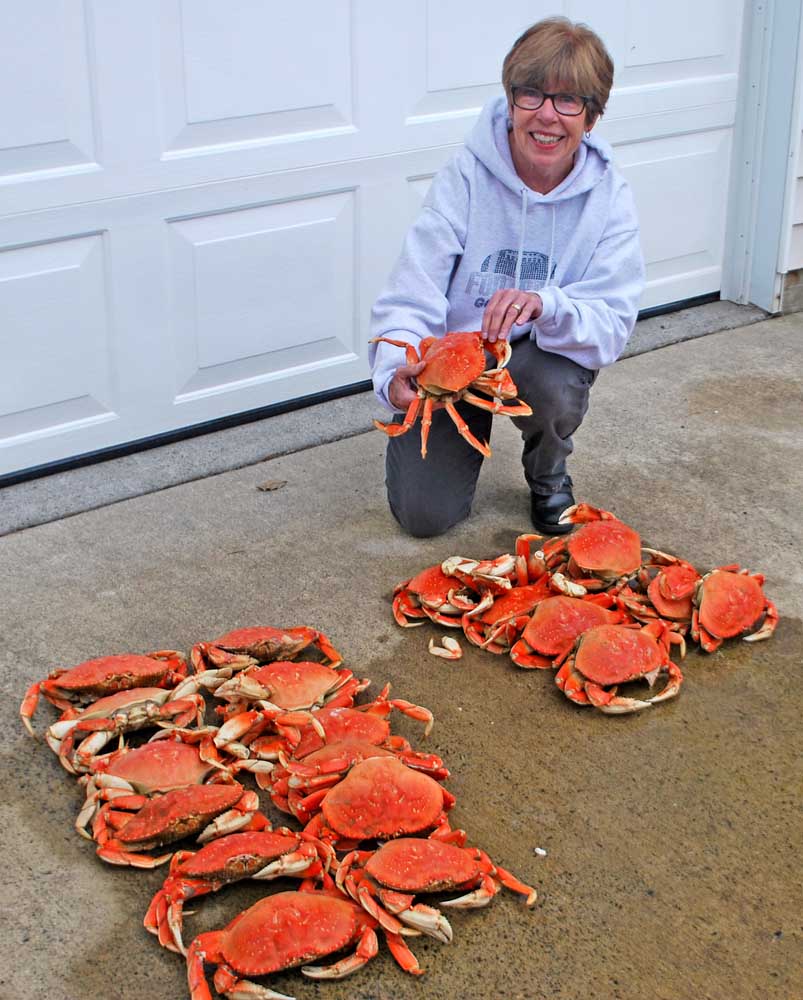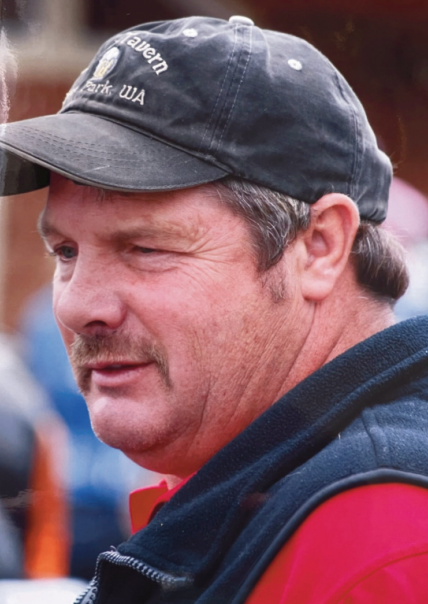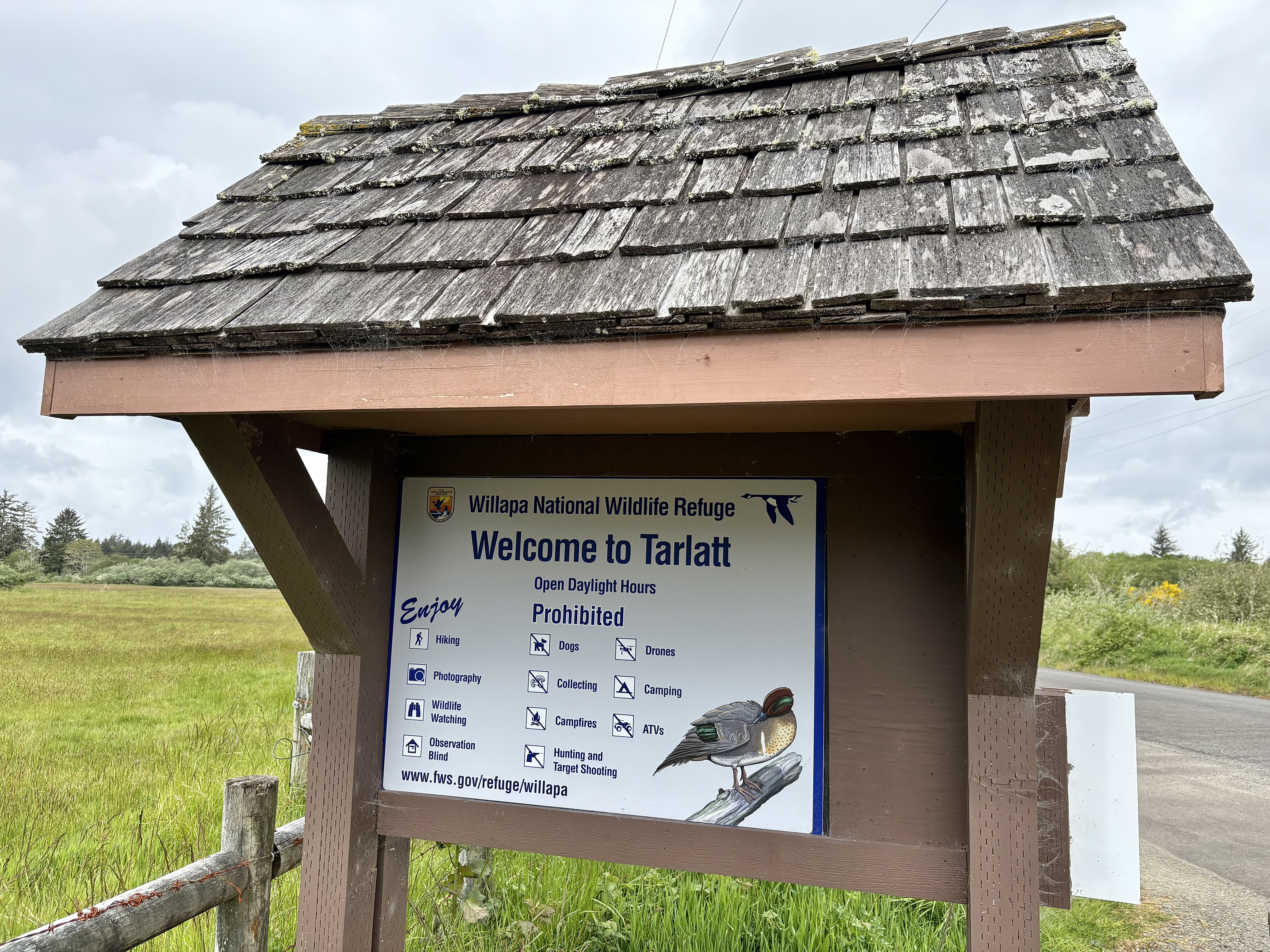Fish & Feathers: Duck migration is upon us
Published 7:41 am Tuesday, November 22, 2016

- Crabbing is one of Washington’s most popular recreational fisheries. Each year, recreational crabbers catch more than 1.5 million pounds of Dungeness crab using pots, ring nets, and — in the case of wade and dive fishers — their bare hands. A fishing license is required. In this archival Chinook Observer photo, a local resident shows off her family’s daily catch.
Having just got off the road, I can tell you duck migration is in full swing in some parts of the state and just starting in others. On the west side, the Auburn valley is just loaded. More ducks keep pouring in every day. The Nisqually Valley also is an excellent spot to take limits or just enjoy the sight of so many waterfowl.
Trending
Several flocks of different species of ducks can be seen on the Willapa River and different sloughs feeding into Willapa Bay. As usual, they move back and forth between land and the flats with the tide. We’ve had some enormous high tides in the bay, thanks in part to the relatively nearby “super moon,” so keep an eye on the water level.
On the east side of the mountains, evening temperatures are dropping to the freezing point and storms having increasing. This is starting to move the northern birds down. Migration is just beginning there but should continue getting better. Reports from around Yakima indicate that teal and some northern mallards are moving into the area. In another couple of weeks we should really start into the prime phase of migration. December is when I prefer hunting the Yakima area, because it then also provides good opportunities for goose hunting.
If you’re a recreational crabber, now is the time to get your pots in the water. It won’t be long before the commercial pots will be going in, and that takes the cream of the crop. I had the opportunity to eat some crab taken from the waters below the lighthouse at the mouth of the river. They had a lot of meat (close to 23 percent) and were very tasty.
Trending
Dungeness are the most commercially successful and popular crab in the Pacific Northwest. Its common name comes from the port of Dungeness, Washington, on the northern Olympic Peninsula, located about five miles north of Sequim.
Mature female crabs generally molt between May and August, and mating occurs immediately after the female has molted and before the new shell hardens. The eggs remain attached to females for three to five months before they are hatched. The young crabs are free-swimming and reach maturity after about two years, according to Wikipedia.
For those of us living in the Northwest with access to a boat and the river or ocean, crabbing is certainly something to try. The meat is beyond description. It is sweet and can be used in a vast number of culinary ways. Limits in the Columbia River are the most generous in all of the state and are certainly worth pursuing.
Ron Malast can be reached at 360-665-3573 or raiders7777@centurylink.net
SEASIDE, Ore. (AP) — State agriculture officials in Oregon have shut down commercial and recreational crabbing in coastal waters from Tillamook Head along the northern coast to the California border because of high levels of domoic acid found in the crabs’ flesh.
The Oregon Department of Agriculture says the ban includes the harvest of Dungeness and red rock crab in bays and estuaries, off docks, piers, jetties and in the ocean.
Crab harvesting from Tillamook Head north to the Columbia River remains open for now.
Consumption of domoic acid can result in dizziness, headaches, vomiting and diarrhea. More severe cases can result in memory loss and death.
Closure of the crab season last year along the Pacific coast due to domoic acid contamination caused a delay in the start of the season near the mouth of the Columbia.









